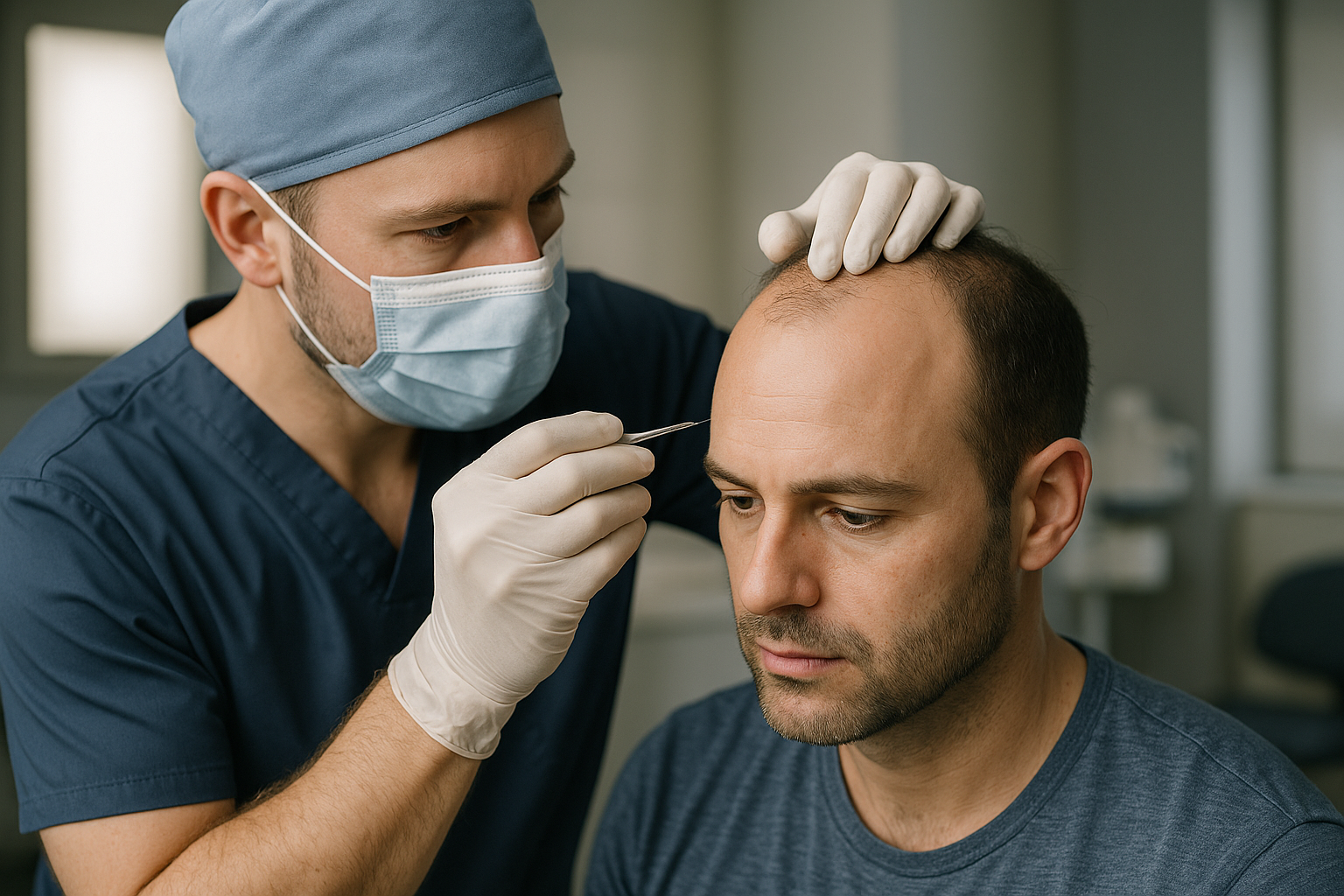Doctors Discuss Innovative Method for Fat Reduction
In recent discussions, medical professionals have highlighted a new fat reduction method that aims to provide effective results with minimal discomfort. This technique utilizes advanced technology to target and eliminate fat cells in specific areas of the body. Doctors emphasize the importance of understanding the procedure's mechanisms and potential outcomes for those considering this treatment.

The landscape of aesthetic medicine has evolved significantly in recent years, with numerous advancements offering alternatives to surgical procedures for those seeking to reduce unwanted fat. These innovative methods have captured the attention of both patients and healthcare professionals, prompting discussions about their efficacy, safety profiles, and long-term outcomes. As more individuals explore non-invasive or minimally invasive options, understanding the science behind these treatments becomes essential.
Medical professionals emphasize that not all fat reduction techniques are created equal, and the suitability of any method depends on individual factors such as overall health, body composition, and specific aesthetic goals. While traditional liposuction remains a proven surgical option, newer approaches often appeal to those seeking less invasive alternatives with shorter recovery periods. These discussions among doctors highlight the importance of evidence-based practice and patient education in the field of aesthetic medicine.
Understanding the New Fat Reduction Method and Its Mechanism
Recent innovations in fat reduction typically involve technologies that target adipose tissue through various mechanisms, including controlled cooling, radiofrequency energy, ultrasound waves, or injectable compounds. Cryolipolysis, for example, uses precisely controlled cooling to freeze fat cells, which are then naturally eliminated by the body over several weeks. Radiofrequency and ultrasound-based treatments work by heating fat cells to disrupt their structure, triggering a natural metabolic process that gradually reduces the treated area.
Injectable treatments represent another category, where specific compounds are introduced directly into fat deposits to break down cell membranes. The body then processes and eliminates the released fat through its lymphatic system. Each method operates on the principle that fat cells, once destroyed or damaged, do not regenerate, leading to a reduction in the treated area. However, doctors stress that these procedures are not weight-loss solutions but rather body contouring tools designed for specific problem areas resistant to diet and exercise.
The selection of an appropriate method depends on factors such as the location and volume of fat, skin elasticity, and patient expectations. Medical professionals conduct thorough assessments before recommending any procedure, ensuring that patients understand both the potential benefits and limitations of the chosen approach.
Insights from Medical Professionals on Effectiveness and Safety
Doctors who specialize in aesthetic medicine generally agree that modern fat reduction methods can be effective when applied to appropriate candidates. Clinical studies have demonstrated measurable reductions in fat layer thickness following treatments, with results typically becoming visible within two to three months as the body processes the affected cells. However, effectiveness varies based on individual metabolism, treatment area, and adherence to post-procedure guidelines.
Safety remains a paramount concern in medical discussions. Most non-invasive and minimally invasive procedures carry lower risks compared to surgical alternatives, with common side effects including temporary redness, swelling, bruising, or numbness in the treated area. Serious complications are rare but can occur, particularly when procedures are performed by inadequately trained practitioners or in inappropriate settings.
Medical professionals emphasize the importance of choosing qualified, experienced providers who operate in properly equipped facilities. They also note that realistic expectations are crucial, as these methods typically produce subtle to moderate improvements rather than dramatic transformations. Multiple treatment sessions may be necessary to achieve desired results, and maintenance of a healthy lifestyle is essential to preserve outcomes over time.
What Patients Should Know Before Considering This Treatment
Before pursuing any fat reduction procedure, patients should schedule comprehensive consultations with qualified medical professionals. During these appointments, doctors assess overall health, discuss medical history, and evaluate whether the patient is a suitable candidate. Certain conditions, such as pregnancy, severe obesity, or specific metabolic disorders, may preclude individuals from undergoing particular treatments.
Patients should inquire about the provider’s credentials, experience with the specific procedure, and the facility’s safety protocols. Understanding the expected timeline for results, potential side effects, and any necessary follow-up care helps set realistic expectations. Financial considerations are also important, as many aesthetic procedures are not covered by health insurance and require out-of-pocket payment.
Doctors advise patients to be wary of claims that sound too good to be true, such as promises of dramatic weight loss or permanent results without lifestyle modifications. Reputable practitioners provide honest assessments and detailed information about what can realistically be achieved. They also discuss alternative options and may recommend that some patients focus on traditional weight loss methods before considering body contouring procedures.
Practical Considerations and Cost Factors
The financial aspect of fat reduction procedures varies considerably depending on the method chosen, the treatment area, the number of sessions required, and the provider’s location and expertise. Non-invasive treatments such as cryolipolysis typically range from £300 to £800 per session, with most patients requiring two to four sessions for optimal results. Radiofrequency and ultrasound-based treatments often fall within a similar price range, though costs can increase for larger treatment areas.
Injectable fat reduction treatments may cost between £400 and £1,200 per session, depending on the volume of product needed and the complexity of the treatment area. Traditional surgical liposuction, while more invasive, generally ranges from £2,000 to £6,000 depending on the extent of the procedure. Patients should factor in potential additional costs such as consultation fees, follow-up appointments, and any necessary compression garments or post-treatment care products.
| Treatment Type | Typical Cost Range (Per Session) | Number of Sessions Typically Needed |
|---|---|---|
| Cryolipolysis | £300 - £800 | 2 - 4 |
| Radiofrequency Treatment | £350 - £750 | 3 - 6 |
| Ultrasound-Based Treatment | £400 - £900 | 2 - 4 |
| Injectable Fat Reduction | £400 - £1,200 | 1 - 3 |
| Surgical Liposuction | £2,000 - £6,000 | 1 (surgical procedure) |
Prices, rates, or cost estimates mentioned in this article are based on the latest available information but may change over time. Independent research is advised before making financial decisions.
Conclusion
The advancement of fat reduction technologies has provided patients with more options than ever before, each with distinct mechanisms, benefits, and considerations. Medical professionals continue to evaluate and discuss these innovations, emphasizing the importance of evidence-based practice, patient safety, and realistic expectations. While these methods can effectively contour specific body areas, they work best as part of a comprehensive approach to health and wellness that includes proper nutrition and regular physical activity. Individuals considering such treatments should engage in thorough consultations with qualified practitioners, ask detailed questions, and carefully weigh the potential benefits against the costs and risks involved.
This article is for informational purposes only and should not be considered medical advice. Please consult a qualified healthcare professional for personalized guidance and treatment.



